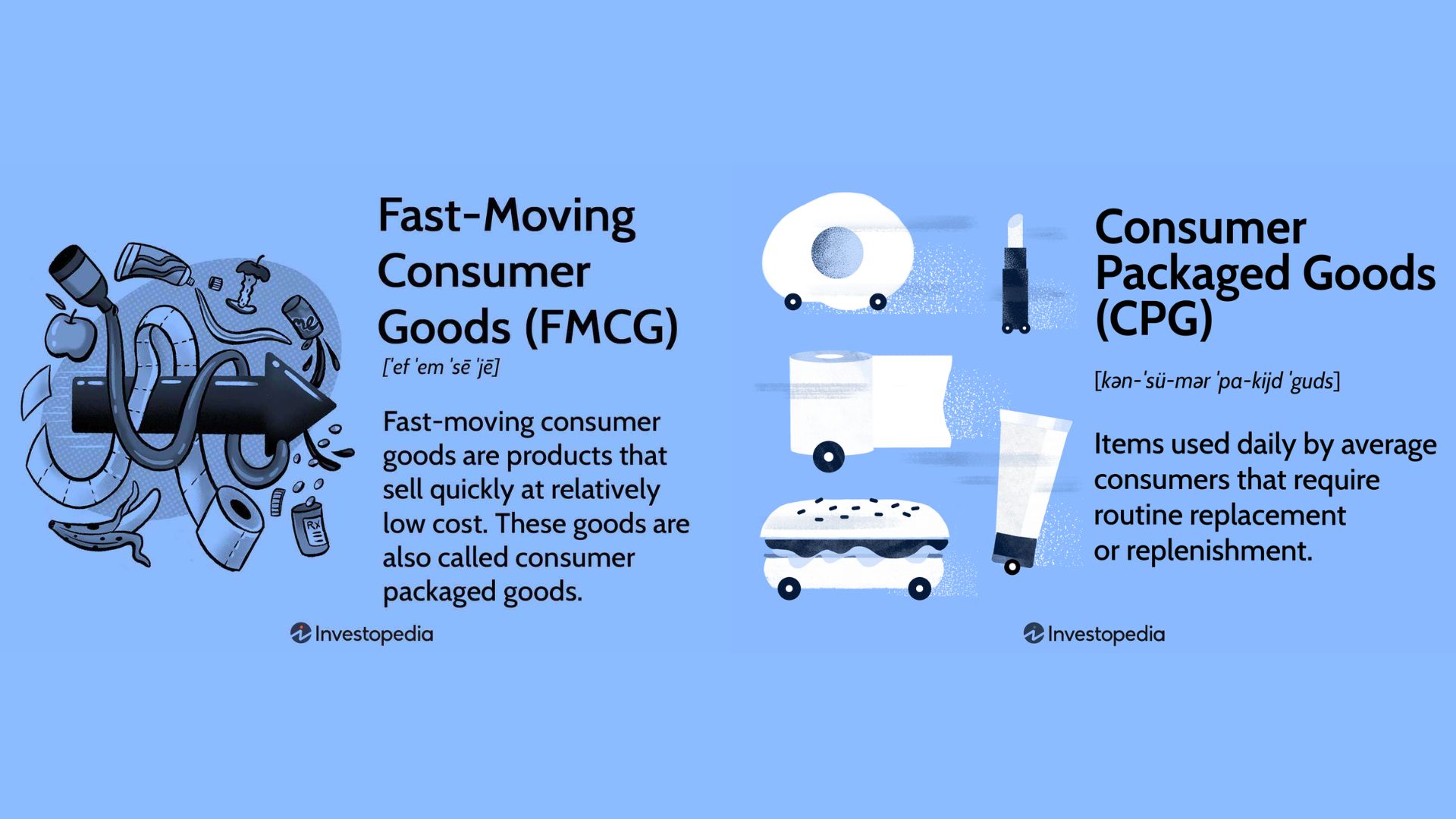FMCG vs CPG - What Is The Difference?

Written by: BD Team | Published a year ago
In the world of consumer goods, two terms frequently surface: FMCG and CPG. While they might seem interchangeable at first glance, they represent distinct categories with their unique characteristics and consumer behavior dynamics.
Definition of FMCG vs CPG
FMCG: Fast-Moving Consumer Goods are products that are consumed rapidly at relatively low costs. These items, including food, beverages, toiletries, and other consumables, are part of consumers' daily lives, leading to their quick turnover. FMCG are characterised by their perishable nature and are sold in large quantities to compensate for their low cost.
CPG: Consumer Packaged Goods is a broader term that includes FMCG but extends to products with longer lifespans and less frequent usage. These goods are packaged for consumer convenience and are typically used over an extended period. Examples of CPG range from clothing and appliances to furniture.
CPG brands invest significantly in research and development to innovate and cater to specific consumer needs, leading to longer product development cycles. CPG companies also emphasise building brand loyalty and fostering strong customer relationships to sustain sales over longer periods. Additionally, CPG has a broader spectrum, including durable goods and products used less frequently but essential for consumers' lives.
Credit: Google
Whereas FMCG brands prioritise speed, focusing on quickly meeting consumer demands for new products to maintain market competitiveness. As well as this the items are sold rapidly, influencing marketing strategies geared towards increasing turnover rates and ensuring availability. Lastly, FMCG includes items used daily, emphasising necessities and consumables.
While FMCG and CPG are often used interchangeably, they represent distinct categories within the consumer goods landscape. Recognising the disparities between them is crucial for businesses to formulate effective strategies tailored to their target consumers. Whether categorised as FMCG or CPG carries significant implications for product development, marketing approaches, and customer relationship management. By understanding these differences, businesses can navigate the dynamic consumer goods market more adeptly, maximizing their potential for success.
–Mirfat Khamis, Digital Marketing Specialist, Imagine
